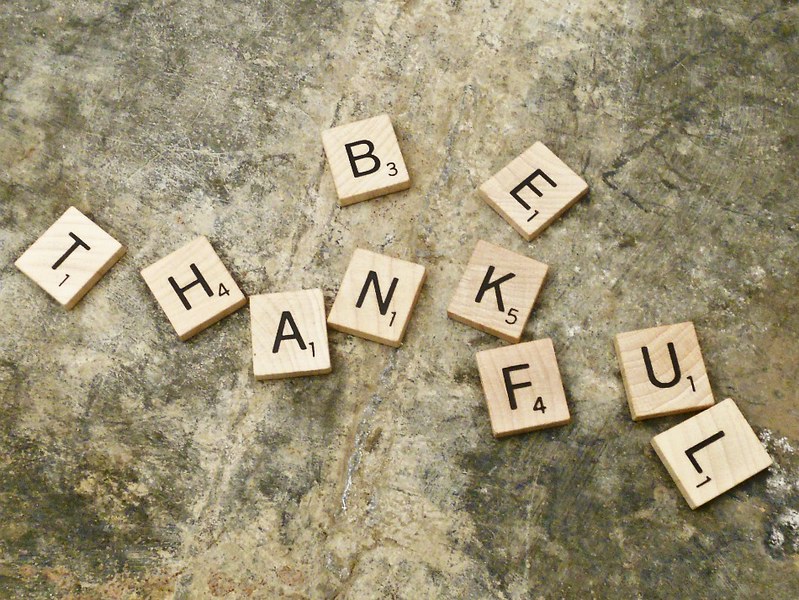Archive for the ‘Fundementals’ Category
How To Reduce the Tariff Signature of Your Supply Chain
 Supply chains have taken it on the chin, first from COVID-19 and now from tariffs (or the threat of them). For the second time in several years, we have objective evidence there is more to a supply chain than implementing the lowest-cost way to meet predictable demand. Tariffs have highlighted the cost of an inflexible supply chain because we can quantify the savings from moving parts to countries with lower tariffs.
Supply chains have taken it on the chin, first from COVID-19 and now from tariffs (or the threat of them). For the second time in several years, we have objective evidence there is more to a supply chain than implementing the lowest-cost way to meet predictable demand. Tariffs have highlighted the cost of an inflexible supply chain because we can quantify the savings from moving parts to countries with lower tariffs.
With tariffs, Lean’s mantra of “make it where you sell it” has sharper teeth.
At the most fundamental level, supply chains are governed by the parts. Big parts, big factories; small parts, small machines; high part volume, high volume processes; low part volume, low volume processes; specialized coatings on the parts, specialized suppliers; parts with proprietary materials, sole source supplier. The supply chain is defined by its parts. And when you try to move the manufacture of parts from one country to another, these part-based constraints are the very thing that creates supply chain inflexibility. Said another way, if you want to improve a supply chain’s flexibility, you’ve got to start with the parts. If you want to reduce the tariffs of your supply chain, start with the parts.
All the parts in the supply chain are important but with tariffs, some parts are more important than others. You can make significant improvements in your supply chain’s tariff signature if you know the handful of parts that will deliver the largest tariff reduction. For each part within your supply chain calculate
(material cost x volume x tariff percentage)
and sort the product from largest to smallest. For the top ten parts assess the part-specific constraints that governed the original decision of the supplier and country. For each part identify a country with lower tariffs and pair it with the part-specific constraints. You now have a list of the top ten opportunities to reduce the tariff signature, what must change in the design to move to a lower tariff location, and the entitlement savings. The DFM-based tariff savings for each part is
(part cost x volume x difference in tariff percentage).
Take your top ten list to the product owner and show them the potential savings and ask to meet with the design community so you can explain how each part must change so it can move to a lower tariff country. And tell them how much the company will save if those constraints are overcome. This is like classic Design for Manufacturing (DFM) where the part is changed to reduce the cost to make the part, but, instead, the part is changed to reduce the cost of tariffs.
You now have a playbook for the top ten parts, the estimated tariff savings, and the work required to realize those savings. You don’t have to implement the playbook, but you can. And you can repeat the process for the next ten most important parts (11-20). Now you have a playbook for twenty parts and the estimated savings. You can continue the process as needed and step through the list ten parts at a time.
The process I describe is a good way to reduce the cost of tariffs. But to make a dent in the universe, there’s a much better way. It’s called Design For Assembly, or DFA, which is all about product simplification through part elimination. 35% reductions in the number of parts are typical. With DFA, high-tariff parts aren’t changed, they’re eliminated. But where classic DFA prioritizes eliminating the highest-cost parts, tariff-based DFA prioritizes eliminating parts with the highest tariff costs. The calculations to prioritize DFA-based tariff reduction are similar to those for DFM, but the savings are far more severe – the entire tariff and the part cost are saved. The DFA savings are
(part cost x volume x tariff percentage) + (part cost x volume)
Run the calculation for the parts in your supply chain and sort the results from largest to smallest. Take the list of the top ten to the design community and show them how much they can save if they eliminate the parts. Tell them they’ll be the Heros of the Company if they pull it off. Tell them you help them get the tools and training they’ll need. Repeat for the second group of the ten most important parts (11-20).
DFM and DFA are wildly profitable and with the added savings of tariffs, the savings are beyond wild. If there was ever a time to do DFM and DFA, it’s is now.
Image credit — Derell Licht
It’s time for the art of the possible.
 Tariffs. Economic uncertainty. Geopolitical turmoil. There’s no time for elegance. It’s time for the art of the possible.
Tariffs. Economic uncertainty. Geopolitical turmoil. There’s no time for elegance. It’s time for the art of the possible.
Give your sales team a reason to talk to customers. Create something that your salespeople can talk about with customers. A mildly modified product offering, a new bundling of existing products, a brochure for an upcoming new product, a price reduction, a program to keep prices as they are even though tariffs are hitting you. Give them a chance to talk about something new so the customers can buy something (old or new).
Think Least Launchable Unit (LLU). Instead of a platform launch that can take years to develop and commercialize, go the other way. What’s the minimum novelty you can launch? What will take the least work to launch the smallest chunk of new value? Whatever that is, launch it now.
Take a Frankensteinian approach. Frankenstein’s monster was a mix and match of what the good doctor had scattered about his lab. The head was too big, but it was the head he had. And he stitched onto the neck most crudely with the tools he had at his disposal. The head was too big, but no one could argue that the monster didn’t have a head. And, yes, the stitching was ugly, but the head remained firmly attached to the neck. Not many were fans of the monster, but everyone knew he was novel. And he was certainly something a sales team could talk about with customers. How can you combine the head from product A with the body of product B? How can you quickly stitch them together and sell your new monster?
Less-With-Far-Less. You’ve already exhausted the more-with-more design space. And there’s no time for the technical work to add more. It’s time for less. Pull out some functionality and lots of cost. Make your machines do less and reduce the price. Simplify your offering and make things easier for your customers. Removing, eliminating, and simplifying usually comes with little technical risk. Turning things down is far easier than turning them up. You’ll be pleasantly surprised how excited your customers will be when you offer them slightly less functionality for far less money.
These are trying times, but they’re not to be wasted. The pressure we’re all under can open us up to do new work in new ways. Push the envelope. Propose new offerings that are inelegant but take advantage of the new sense of urgency forced.
Be bold and be fast.
Image credit — Geoff Henson
What Is and Is Not
 Building trust takes time. Tearing it apart does not.
Building trust takes time. Tearing it apart does not.
Seeing what is there is easy. Seeing what is missing is not.
Concentrating is easy for some. For others, daydreaming is not.
Bringing your whole self to work takes courage. Pretending does not.
Hearing is easy. Listening is not.
Trying is subjective. Doing is not.
Telling the truth is appreciated. Done unskillfully, it is not.
Singing is easy for some. For others, not singing is not.
Going fast can be good. Going too fast cannot.
Hearing what is said is easy. Hearing what is withheld is not.
Finishing takes a long time. Quitting should not.
Image credit — Mike Keeling
Meeting Time vs. Thinking Time
 How many hours of meetings do you sit through each week? Check your calendar over the previous month and write down that number.
How many hours of meetings do you sit through each week? Check your calendar over the previous month and write down that number.
If you had control over your calendar, would you rather sit through more meetings or fewer?
If you don’t meet enough and need more meetings, I want to work at your company.
If you want fewer, what will you do to change things? Here are two simple things you can try:
- Say no to meetings that have no agenda. Tell them you have a policy to be prepared for all meetings and since you don’t know how to prepare (no agenda!) you’ll sit this one out.
- Say no to meetings where everyone updates each other. Tell them you’ll read the minutes they won’t write.
Check your calendar over the previous month, add the hours you could have saved if you followed the two rules, and divide by four to convert to a weekly average. Write down that number.
How much time do you spend getting ready for meetings each week? Write down that number.
How much time do you spend recovering from meetings each week? (Switching cost is real.) Write down that number.
Now let’s focus on thinking.
How many hours do you think each week? Check your calendar over the previous month, divide by four to convert to a weekly average, and write down that number.
If you had control over your calendar, would you rather think more or less?
If you have too much time to think, I want to work at your company.
If you want to think more, what will you do to change things? Here are two simple things you can try:
- Schedule a one-hour meeting with yourself that recurs weekly. Mark the meeting as “out of office.”
- For the next three weeks, add another recurring meeting with yourself.
And, yes, it’s possible to schedule time to think.
An additional four hours of thinking per week may not sound significant, but it’s probably a 100% increase over your previous weekly average. That’s a big difference especially since everyone else spends most of their time in meetings.
Use the two rules to say no to meetings and you’ll free up a lot of time. And with that freed-up time, you can schedule four hours of thinking time per week.
Why not give it a try? Your career will thank you.
Image credit — Florence Ivy
Improvement In Reverse Sequence
 Before you can make improvements, you must identify improvement opportunities.
Before you can make improvements, you must identify improvement opportunities.
Before you can identify improvement opportunities, you must look for them.
Before you can look for improvement opportunities, you must believe improvement is possible.
Before believing improvement is possible, you must admit there’s a need for improvement.
Before you can admit the need for improvement, you must recognize the need for improvement.
Before you can recognize the need for improvement, you must feel dissatisfied with how things are.
Before you can feel dissatisfied with how things are, you must compare how things are for you relative to how things are for others (e.g., competitors, coworkers).
Before you can compare things for yourself relative to others, you must be aware of how things are for others and how they are for you.
Before you can be aware of how things are, you must be calm, curious, and mindful.
Before you can be calm, curious, and mindful, you must be well-rested and well-fed. And you must feel safe.
What choices do you make to be well-rested? How do you feel about that?
What choices do you make to be well-fed? How do you feel about that?
What choices do you make to feel safe? How do you feel about that?
Image credit — Philip McErlean
How To Make Progress
 Improvement is progress. Improvement is always measured against a baseline, so the first thing to do is to establish the baseline, the thing you make today, the thing you want to improve. Create an environment to test what you make today, create the test fixtures, define the inputs, create the measurement systems, and write a formal test protocol. Now you have what it takes to quantify an improvement objectively. Test the existing product to define the baseline. No, you haven’t improved anything, but you’ve done the right first thing.
Improvement is progress. Improvement is always measured against a baseline, so the first thing to do is to establish the baseline, the thing you make today, the thing you want to improve. Create an environment to test what you make today, create the test fixtures, define the inputs, create the measurement systems, and write a formal test protocol. Now you have what it takes to quantify an improvement objectively. Test the existing product to define the baseline. No, you haven’t improved anything, but you’ve done the right first thing.
Improving the right thing to make progress. If the problem invalidates the business model, stop what you’re doing and solve it right away because you don’t have a business if you don’t solve it. Any other activity isn’t progress, it’s dilution. Say no to everything else and solve it. This is how rapid progress is made. If the customer won’t buy the product if the problem isn’t solved, solve it. Don’t argue about priorities, don’t use shared resources, don’t try to be efficient. Be effective. Do one thing. Solve it. This type of discipline reduces time to market. No surprises here.
Avoiding improvement of the wrong thing to make progress. For lesser problems, declare them nuisances and permit yourself to solve them later. Nuisances don’t have to be solved immediately (if at all) so you can double down on the most important problems (speed, speed, speed). Demoting problems to nuisances is probably the most effective way to accelerate progress. Deciding what you won’t do frees up resources and emotional bandwidth to make rapid progress on things that matter.
Work the critical path to make progress. Know what work is on the critical path and what is not. For work on the critical path, add resources. Pull resources from non-critical path work and add them to the critical path until adding more slows things down.
Eliminate waiting to make progress. There can be no progress while you wait. Wait for a tool, no progress. Wait for a part from a supplier, no progress. Wait for raw material, no progress. Wait for a shared resource, no progress. Buy the right tools and keep them at the workstations to make progress. Pay the supplier for priority service levels to make progress. Buy inventory of raw materials to make progress. Ensure shared resources are wildly underutilized so they’re available to make progress whenever you need to. Think fire stations, fire trucks, and firefighters.
Help the team make progress. As a leader, jump right in and help the team know what progress looks like. Praise the crudeness of their prototypes to help them make them cruder (and faster) next time. Give them permission to make assumptions and use their judgment because that’s where speed comes from. And when you see “activity” call it by name so they can recognize it for themselves, and teach them how to turn their effort into progress.
Be relentless and respectful to make progress. Apply constant pressure, but make it sustainable and fun.
Image credit — Clint Mason
Time Travel Back to the Present
 If you don’t like what happened, now is the time to let it go.
If you don’t like what happened, now is the time to let it go.
If it already happened, it cannot be undone. Time travel is not yet possible. Let it go.
If you spend your energy complaining about the past, you won’t have enough for right now.
If you had no control over the outcome, what does it say if you beat yourself up about the outcome?
It’s not just uranium that has a half-life. Everything does. And so do you.
When you hold tightly to how things are, you get rope burns.
When you no longer have what you had, you can finally appreciate it for what it was.
An unplanned kick in the pants can help you jumpstart a new S-curve when you see it that way.
If you worry about what will happen, don’t. It hasn’t happened and likely won’t.
If you spend your energy worrying about the future, you won’t have enough for right now.
If you try to predict the consequences of bad fortune, you can’t. And it’s the same for good fortune.
Direct linear causality isn’t a thing when it comes to people systems. Propensity, yes. Causality, no.
How it will turn out has nothing to do with how you think it will turn out.
Trying to achieve the ideal future state is a waste of time. There’s no way to know what the Universe thinks is ideal.
The future is uncertain and there’s nothing you can do about it. You might as well not worry about it.
Who is standing in front of you? What if you spent all your energy with them right now? I bet they’d notice.
Who is sitting next to you? What if you treated them like they were the most important thing in your life right now? I bet they’d remember that experience.
What are you doing right now? Wouldn’t it be soothing to put all your energy into that task? Wouldn’t it be helpful to leave the rest for another time? Why not give it a go?
Wouldn’t it be pleasant to put all your energy into doing one thing in a row? Why not try it?
What if you put all your energy into doing the next right thing? Wouldn’t that eliminate some of your stress? Why not test it out?
How would it feel to be here now? Why not give it a try?
Image credit — Bobby Magee
What do you choose to be?

Be bold – the alternative is boring.
Be the first to forgive – it’s like forgiving twice.
Be yourself – you’re the best at that.
Be afraid – and do it anyway.
Be effective – and to hell with efficiency.
Be happy – if that’s what’s inside.
Be authentic – it’s invigorating.
Be energetic – it’s contagious.
Be a listener – that’s where learning comes from.
Be on time – it says you care.
Be early if you can’t be on time – but just a little.
Be courageous – but sparingly.
Be kind – people remember.
Be truthful – that’s how trust is built.
Be a learner – by learning to listen.
Be sad – if that’s what’s inside.
Be a friend – it’s good for them and better for you.
Be nobody – it’s better for everybody, even you.
Image credit — Irene Steeves
I’m Thankful!
 How often do you stop what you’re doing, calm yourself, quiet your mind, and think about what you’re thankful for?
How often do you stop what you’re doing, calm yourself, quiet your mind, and think about what you’re thankful for?
To me, thankfulness is about what I have. I have a family I love and they love me, and for that I am thankful. First and foremost, front and center, family is the first thing that comes to me when I think about what I have. I’m thankful for my family.
I also have my health, and I am thankful for it. Funnily, as I get older and recognize my body is changing, it helps me appreciate the health I still have. Sometimes I get frustrated because I can’t do everything I used to do, but I can still do a lot. And most of the time I’m thankful for the health I have.
I am thankful for the time I have. With the kids no longer in the house, I have more quiet time which I value. I appreciate my quiet time more after something comes up and I don’t have as much as I’d like. Sometimes I complain when things come up and I have less quiet time, but I have nothing to complain about because I have enough. After I get over myself, I am more thankful for my quiet time. And, secretly, I wish the kids were back in the house and I had less quiet time. Don’t tell anyone.
I’ve found that my thankfulness is amplified when I tell people about it. When I tell people I’m thankful for their friendship, I’m doubly thankful – once because I remind myself and once because my thankfulness is appreciated. The same thing goes when I tell someone I’m thankful for something they did.
Why not stop what you’re doing, calm yourself, quiet your mind, and think about what you’re thankful for? And why not double the fun and tell someone about it?
You can generate as much thankfulness as you want. And if you give it away, you can always make more. So why not give away some thankfulness to someone you are thankful for? And why not make more and do it again?
Happy Thanksgiving and thanks for reading.
Mike
Image credit — Cindi Albright
It’s not the work, it’s the people.
 I used to think the work was most important. Now I think it’s the people you work with.
I used to think the work was most important. Now I think it’s the people you work with.
Hard work is hard, but not when you share it with people you care about.
Struggle is tolerable when you’re elbow-to-elbow with people you trust.
Fear is manageable when you have faith in your crew.
You’re happy to carry an extra load when your friend needs the help.
And your friend is happy to do the same for you.
When you’ve been through the wringer a teammate, they grow into more than a teammate.
If you smile at work, it’s likely because of the people you work with.
And when you’re sad at work, it’s also likely because of to the people.
When you care about each other, things get easier, even when they’re not easy.
Stop what you’re doing and look at the people around you.
What do you see?
Who has helped you? Who has asked for help?
Who has confided in you? To whom have you confided?
Who believes in you? In whom do you believe?
Who are you happy to see? Who are you not?
Who will you miss when they’re gone?
For the most important people, take a minute and write down your shared experiences and what they mean to you.
What would it mean to them if you shared your thoughts and feelings?
Why not take a minute and find out?
Wouldn’t work be more energizing and fun?
If you agree, why not do it? What’s in the way? What’s stopping you?
Why not push through the discomfort and take things to the next level?
Image credit — HLI-Photography
If you want to make a difference, change the design.
 Why do factories have 50-ton cranes? Because the parts are heavy and the fully assembled product is heavier. Why is the Boeing assembly facility so large? Because 747s are large. Why does a refrigerator plant have a huge room to accumulate a massive number of refrigerators that fail final test? Because refrigerators are big, because volumes are large, and a high fraction fail final test. Why do factories look as they do? Because the design demands it.
Why do factories have 50-ton cranes? Because the parts are heavy and the fully assembled product is heavier. Why is the Boeing assembly facility so large? Because 747s are large. Why does a refrigerator plant have a huge room to accumulate a massive number of refrigerators that fail final test? Because refrigerators are big, because volumes are large, and a high fraction fail final test. Why do factories look as they do? Because the design demands it.
Why are parts machined? Because the materials, geometries, tolerances, volumes, and cost requirements demand it. Why are parts injection molded? Because the materials, geometries, tolerances, volumes, and cost requirements demand it. Why are parts 3D printed? For prototypes, because the design can tolerate the class of materials that can be printed and can withstand the stresses and temperature of the application for a short time, the geometries are printable, and the parts are needed quickly. For production parts, it’s because the functionality cannot be achieved with a lower-cost process, the geometries cannot be machined or molded, and the customer is willing to pay for the high cost of 3D printing. Why are parts made as they are? Because the design demands it.
Why are parts joined with fasteners? It’s because the engineering drawings define the holes in the parts where the fasteners will reside and the fasteners are called out on the Bills Of Material (BOM). The parts cannot be welded or glued because they’re designed to use fasteners. And the parts cannot be consolidated because they’re designed as separate parts. Why are parts held together with fasteners? Because the design demands it.
If you want to reduce the cost of the factory, change the design so it does not demand the use of 50-ton cranes. If you want to get by with a smaller factory, change the design so it can be built in a smaller factory. If you want to eliminate the need for a large space to store refrigerators that fail final test, change the design so they pass. Yes, these changes are significant. But so are the savings. Yes, a smaller airplane carries fewer people, but it can also better serve a different set of customer needs. And, yes, to radically reduce the weight of a product will require new materials and a new design approach. If you want to reduce the cost of your factory, change the design.
If you want to reduce the cost of the machined parts, change the geometry to reduce cycle time and change to a lower-cost material. Or, change the design to enable near-net forging with some finish machining. If you want to reduce the cost of the injection molded parts, change the geometry to reduce cycle time and change the design to use a lower-cost material. If you want to reduce the cost of the 3D printed parts, change the design to reduce the material content and change the design and use lower-cost material. (But I think it’s better to improve function to support a higher price.) If you want to reduce the cost of your parts, change the design to make possible the use of lower-cost processes and materials.
If you want to reduce the material cost of your product, change the design to eliminate parts with Design for Assembly (DFA). What is the cost of a part that is designed out of the product? Zero. Is it possible to wrongly assemble a part that was designed out? No. Can a part that’s designed out be lost or arrive late? No and no. What’s the inventory cost of a part that’s been designed out? Zero. If you design out the parts is your supply chain more complicated? No, it’s simpler. And for those parts that remain use Design for Manufacturing (DFM) to work with your suppliers to reduce the cost of making the parts and preserve your suppliers’ profit margins.
If you want to sell more, change the design so it works better and solves more problems for your customers. And if you want to make more money, change the design so it costs less to make.
 Mike Shipulski
Mike Shipulski